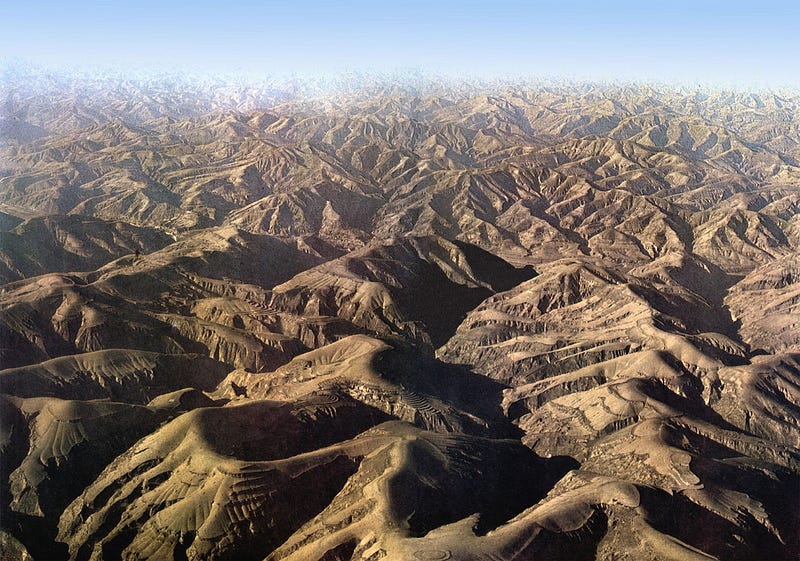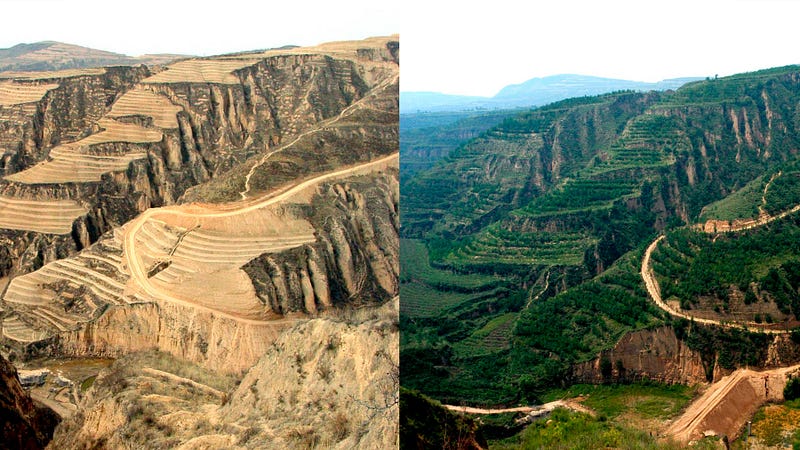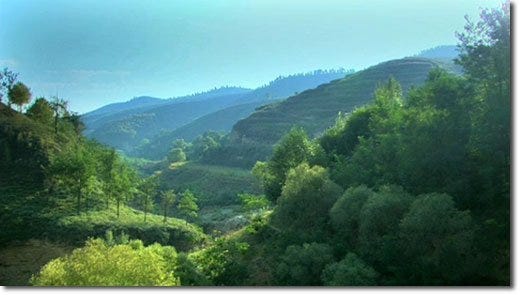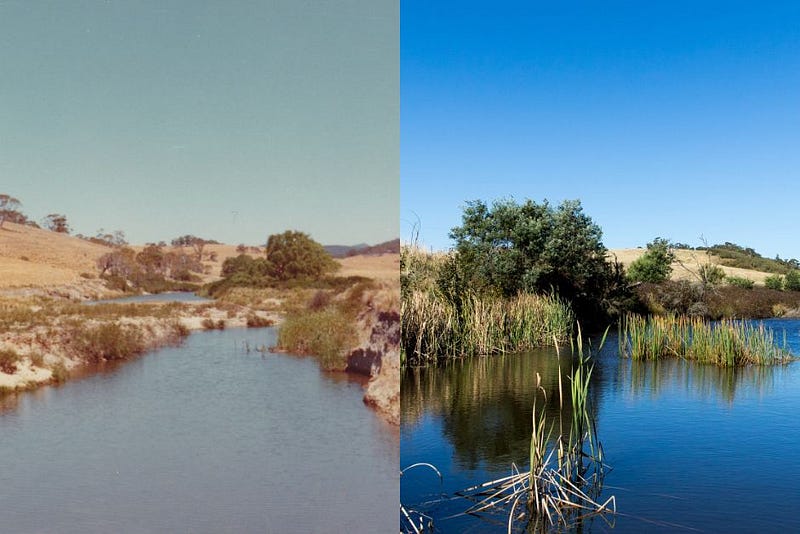Reviving Our Planet: Strategies for Greening the Earth
Written on
Chapter 1: Understanding Ecological Amnesia
Our perception of the world is shaped not only by what we remember but also by what we forget. The countless memories lost over time create a distorted understanding of our past. Historians and ecologists alike grapple with this issue as they seek to reconstruct what landscapes once looked like in their untouched states. Were the moorlands of England or the highlands of Scotland natural ecosystems, or are they signs of ecological collapse? Who determines what the natural world should resemble in our constantly changing environment? For instance, did you know that 40,000 years ago, straight-tusked elephants (Elephas antiquus) roamed Europe? While we may have forgotten, nature has not; the trees that survived are an enduring testament to their strength, resilient enough to withstand these giant mammals.
In North America, the once pristine Potomac River teemed with life, boasting sturgeon up to eighteen feet long and countless shoals of herring, such as alewife and shad. This abundance wasn’t a distant memory but a reality from just a few centuries ago, when European colonists first arrived. Today, however, very few remember the river's rich past, leading to a collective ecological amnesia.
The Epic of Gilgamesh, the oldest known written narrative, serves as a reminder of humanity's overwhelming power over nature. Envision a dense cedar forest where light barely touches the ground, and lions or tigers prowl in the shadows. Most envision Africa, not the ancient region of Mesopotamia. Here, Gilgamesh ruled Uruk, one of civilization's earliest cities. In his quest for glory, he ventured into the mythical cedar forest, battling Humbaba the Terrible, the guardian of the forest, and ultimately destroying it. This triumph proved to be a grave error, as the land, stripped of its trees, eroded, leading to the eventual collapse of his civilization.
The consequences of this destructive pattern are evident across history. As we confront challenges like population growth, climate change, soil erosion, and drought, the pressing question arises: Can we reverse this trend? If so, how can we bring life back to our planet?
Life on The Loess Plateau

The Loess Plateau in China is one of the earliest agricultural hubs, known for its fertile soil. However, years of overgrazing, subsistence farming, and deforestation transformed this once lush landscape into a dust-ridden wasteland. Erosion carved deep gullies, and sediment flowed into the Yellow River, which suffered from severe flooding, earning it the nickname "China's Sorrow." Upon arriving in the 1990s, Juergen Voegele from the World Bank was taken aback by the desolation.
To address this crisis, the World Bank collaborated with local farmers, studying the soil and mapping the terrain. However, the solution remained elusive. The land had lost much of its organic matter, critical for fertility. Often overlooked, the ecosystem beneath our feet is essential for sustaining life on Earth. Decomposers like saprophytes break down waste, returning nutrients to the soil, while others help fix nitrogen—an essential element for plant growth.
Beneath our feet lies a vast network of mycelium, the fungal architecture that is critical for decomposition. Primary decomposers, such as oyster and shiitake mushrooms, break down organic matter, while secondary decomposers finish the process. However, introducing just any species to the soil won’t work; soil organisms are highly selective about their habitats. Nematodes, for example, are key indicators of soil health, regulating bacterial populations and nitrogen mineralization.
Without this diverse community of organisms, life ceases to exist. Seeds fail to germinate, animals either migrate or perish, and the land ultimately dies. To revive the Loess Plateau, the team spent another year devising a plan. They divided the land into areas for economic use and nature, halting open-grazing practices to allow vegetation to stabilize the soil. Following devastating floods in 1998, indiscriminate logging was banned.
In degraded areas deemed unsuitable for agriculture, 270,000 hectares were planted with trees, shrubs, and grasses to bolster stability, particularly in the arid north. Species like black locust and Chinese pine were introduced to fix nitrogen in sandy soils, fostering a return of diverse plant life.

While private land ownership was not feasible in communist China, the team established long-term leases to encourage stewardship. Initially skeptical residents began to participate in the larger project, constructing over 72,000 hectares of terraces, which doubled grain yields. These wider terraces improved access and water conservation, helping to reduce erosion.
The first video titled How to Green the World's Deserts and Reverse Climate Change by Allan Savory discusses strategies for reversing desertification and climate change, drawing parallels to the restoration efforts in places like the Loess Plateau.
Throughout the years, thousands of sediment control dams were built to prevent soil from washing away, resulting in more arable land for crops. The staggering sum of $500 million was invested in restoration, a small price for remarkable outcomes. By 2000, forest cover increased by over 7.5%, with more than 90% of the plateau showing improvements in carbon sequestration, transitioning from a carbon source to a carbon sink. Moreover, soil erosion decreased by 57 million tons annually, and the large-scale planting of orchards turned the region into a major apple producer.
As a result, poverty diminished significantly, with employment rising by 17 points to 87%. The agricultural production value skyrocketed to Yuan 577 million in 2001, nearly seven times what it was in 1993. School enrollment and healthcare also showed improvements. Voegele remarked, "Even after hundreds of years of complete devastation, the seeds were still in the ground, and things began to happen very quickly." The revitalization of the region has become a success story in both development and ecology.

The project concluded in 2001, but initiatives like the "Grain for Green" program continue its legacy by purchasing erosion-prone land from farmers and converting it to natural vegetation. This effort has involved 124 million people and restored 32 million hectares by 2010, highlighting a global model for ecological restoration.
Erosion in Ethiopia
In Ethiopia, the government allocates $1.2 billion annually to rejuvenate its landscapes. With a rich agricultural history dating back to the Axumite Empire, Ethiopia faces its version of the Gilgamesh syndrome. The Ethiopian Highlands, known as the "Roof of Africa," have suffered severe degradation due to population pressure, steep cultivation, and deforestation, leading to significant topsoil loss.
Recent efforts have transformed the situation. Over the last three decades, the Ethiopian government has implemented innovative soil and water conservation techniques. Soil bunds, combined with trenches and trees, allow water to permeate the ground and prevent erosion, similar to the methods employed on the Loess Plateau.

Since 1991, soil and water conservation projects have covered 960,000 hectares, with an additional 1.2 million hectares set aside for natural vegetation to regrow. Soil loss has been reduced by up to 90%, contributing positively to carbon sequestration.
The second video titled Have You Ever Wondered Why Our World is Green? explores the interconnectedness of ecosystems and the importance of maintaining green spaces, reinforcing the significance of restoration efforts like those in Ethiopia.
As the environment improves, people’s spirits are also being revived. Many who had left in search of better opportunities are returning home, motivated by the rejuvenation of their communities. The Ethiopian government has launched an ambitious initiative called the "Climate-Resilient Green Economy," aiming to restore one-sixth of the nation’s land by 2030. Although this goal requires overcoming significant bureaucratic hurdles, it highlights a commitment to ecological restoration.
Peter Andrews: An Australian Legend
The impact of the Gilgamesh syndrome has been particularly severe in Australia. Unlike China or Ethiopia, Australia lacks thousands of years of agricultural heritage, with traditional practices limited to controlled burning techniques. A century of industrialized farming has drastically altered the landscape.
At Mulloon Creek, a farm near Canberra, Tony Coote recognized the urgent need for restoration. After watching a documentary on Peter Andrews, an innovative farmer, Coote enlisted Andrews’s help to rejuvenate the property. Andrews’s approach, known as natural sequence farming, aimed to restore upland valleys and creeks, creating ponds and wetlands to hydrate the land and prevent erosion.
The duo began constructing "leaky weirs," similar to the structures built in Ethiopia and the Loess Plateau. They incorporated rocks, fallen trees, and other materials, even introducing blackberry canes into the creek to enhance fertility.

As a result, the soil became teeming with life. According to Peter Hazell from the Mulloon Institute, "It’s alive with fungus and bacteria, earthworms, and they’re all processing that organic matter and litter." Despite recent droughts, the creek continues to flow, catching the attention of Prime Minister Scott Morrison, who praised Andrews as a visionary leader.
Andrews's legacy endures even after the passing of Tony Coote in 2018. Other farmers, like Martin Royds in Jillamatong, have adopted these principles, successfully maintaining water flow during extreme conditions. The UN has recognized Mulloon Creek as one of only five sustainable sites globally.
Andrews reflects on the success, stating, "All we’ve done is reproduced what was a natural process in Australia’s landscape." Instead of fighting against nature, visionaries like Andrews have embraced its principles, demonstrating how we can all contribute to greening the world.